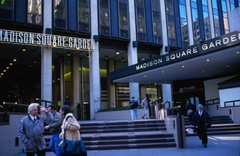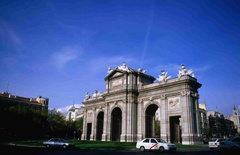 The most beguiling city in the world, New York is an adrenaline-charged, history-laden place that holds immense romantic appeal for visitors. Wandering the streets here, you'll cut between buildings that are icons to the modern age – and whether gazing at the flickering lights of the midtown skyscrapers as you speed across the Queensboro bridge, experiencing the 4am half-life downtown, or just wasting the morning on the Staten Island ferry, you really would have to be made of stone not to be moved by it all. There's no place quite like it.
The most beguiling city in the world, New York is an adrenaline-charged, history-laden place that holds immense romantic appeal for visitors. Wandering the streets here, you'll cut between buildings that are icons to the modern age – and whether gazing at the flickering lights of the midtown skyscrapers as you speed across the Queensboro bridge, experiencing the 4am half-life downtown, or just wasting the morning on the Staten Island ferry, you really would have to be made of stone not to be moved by it all. There's no place quite like it.While the events of September 11, 2001, which demolished the World Trade Center, shook New York to its core, the populace responded resiliently under the composed aegis of then-Mayor Rudy Giuliani. Until the attacks, many New Yorkers loved to hate Giuliani, partly because they saw him as committed to making their city too much like everyone else's. To some extent he succeeded, and during the late Nineties New York seemed cleaner, safer, and more liveable, as the city took on a truly international allure and shook off the more notorious aspects to its reputation. However, the maverick quality of New York and its people still shines as brightly as it ever did. Even in the aftermath of the World Trade Center's collapse, New York remains a unique and fascinating city – and one you'll want to return to again and again.
You could spend weeks in New York and still barely scratch the surface, but there are some key attractions – and some pleasures – that you won't want to miss. There are the different ethnic neighborhoods, like lower Manhattan's Chinatown and the traditionally Jewish Lower East Side (not so much anymore); and the more artsy concentrations of SoHo, TriBeCa, and the East and West Villages. Of course, there is the celebrated architecture of corporate Manhattan, with the skyscrapers in downtown and midtown forming the most indelible images. There are the museums, not just the Metropolitan and MoMA, but countless other smaller collections that afford weeks of happy wandering. In between sights, you can eat just about anything, at any time, cooked in any style; you can drink in any kind of company; and sit through any number of obscure movies. The more established arts – dance, theater, music – are superbly catered for; and New York's clubs are as varied and exciting as you might expect. And for the avid consumer, the choice of shops is vast, almost numbingly exhaustive in this heartland of the great capitalist dream.
Information by Rough Guides







